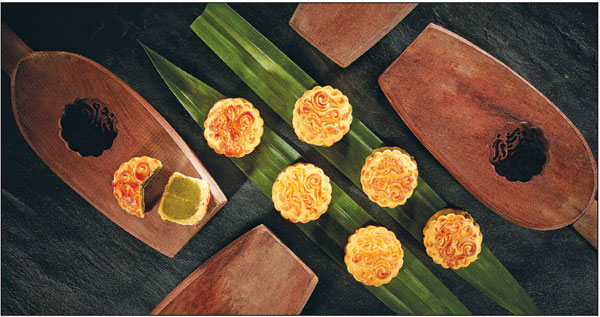 |
|
The Shanghai Confectionery Industry Association says that consumers will be able to find as many as 200 types of mooncakes on the market this year. [Photo provided to China Daily] |
This traditional Chinese pastry is now making an emphatic comeback as restaurants seek to outdo one another
The Xucheng Hotel in Suzhou may look like the typical, nondescript Chinese State-owned four-star hotel, but its fame among the locals certainly supersedes its uninspiring facade and interiors.
Widely considered to be one of the best mooncake makers in the city, the hotel's main restaurant - it does not even have a name - is helmed by chef Pan Xiaomin who showed no lack of candor when asked about his kitchen's rise to fame which started in the late 1990s.
"We started making mooncakes for the most absurd and irrelevant reason," laughed the 66-year-old, a no-nonsense man who is always armed with a cigar in one hand.
"The owner wanted to upgrade the hotel into a four-star property and this meant that our restaurant needed to introduce a Western pastry menu as stipulated by the national tourism authority."
Pan was livid at the demands, particularly because he knew it was impossible to teach his cooks how to make bread and cakes in such a short time.
Besides, his expertise was in crafting delicate Chinese dishes such as the famed sweet and sour squirrel fish and stir-fried river shrimps.
Almost nonchalantly, Pan settled on mooncakes, the traditional food that is consumed during the annual Mid-Autumn Festival, which falls on Oct 4 this year, simply because he knew how to make it.
There are many varieties of mooncakes on the market. The type that Pan produces is known as the Su-style version which comes with a flaky exterior similar to a croissant and is filled with savory fillings like pork. Since the mooncake was the only "Western-like pastry" the hotel restaurant had to offer, it was made available all year round.
The mooncakes by Xucheng Hotel have since become the accidental star in the local dining scene. In fact, they have even been recommended by China's most renowned food critic Shen Hongfei.
Sales of the mooncakes, which cost less than $1 per piece, have been growing steadily at an annual rate of more than 10 percent. This year, the hotel and its other branches in the city are expected to sell a record high of 3 million mooncakes.
One of the most important traditional Chinese festivals, the Mid-Autumn Festival is widely celebrated across the country and is seen as an occasion to reunite with family members. Mooncakes were invented to symbolize reunion and the pleasant memories brought by kinship.
Sun Chunli, deputy director of Xing Hua Lou Food and Restaurant, one of Shanghai's most historical mooncake makers that was established in 1851, noted that mooncakes were not commonplace before the 1950s because of limited production capacity and inaccessibility of ingredients like sugar and nuts.
Mooncakes during those times were also significantly larger, nearly the size of an adult person's palm. Then, a family would share just one piece of mooncake following dinner on the day of the Mid-Autumn Festival.
It was only after the 1990s when China reopened to the world that mooncakes started to become gifts.
|
|
|
|
|
|
|
|
